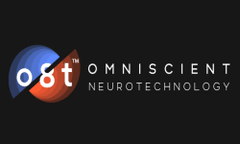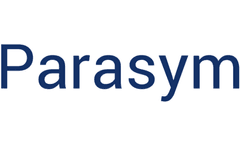Brain Activity Articles & Analysis
14 articles found
Alcohol is a central nervous system depressant, which slows down brain activity, and can make you fall asleep faster than usual. In short, a turkey dinner serves up plenty of ways to make you sleepy—turkey shouldn’t get all the blame. ...
use of the arm versus compensation (i.e. use it to improve it, use it or lose it; pain, learned behaviors, and effort required to use the paralyzed limb may discourage use and promote disuse, causing a cascade of further physical and even emotional impairments) action observation (i.e. observation of a real or animated individual or individual’s hand performing the movement to ...
Every time you meet someone new, your brain goes through a series of checks to decide what you think of them. ...
As a result, the physiological activities of the cells in the tissues are slowed down, or even interrupted, leading to health conditions and diseases. ...
There is no such thing as unimportant, or non-eloquent, brain. For decades, neuroscientists and clinicians have studied the brain attempting to pinpoint the regions that control specific functions. This is the age old question of ‘What part of the brain is responsible for ___?’ For clinicians, this assists in determining where the source of certain disorders may originate and ...
Other CPPs present additional advantages such as tumor-homing, penetration through the blood-brain barrier, and antimicrobial activity. l FeaturesThe most remarkable feature of cell-penetrating peptides is that it’s able to penetrate the cell membrane at low micromolar concentrations in vivo and in vitro, without using any chiral receptors and without causing ...
In particular, a clearer understanding of the changes in brain structures that could predict treatment success. Previous studies have reliably demonstrated the involvement of the insula as well as the thalamus and hippocampus. However, there is still room to further ascertain the relationship between brain region activation/deactivation by tVNS ...
One of the world’s leading figures in Artificial Intelligence, the renowned brain and cognitive scientist Newton Howard, PhD., will be at The Artificial Intelligence and Business Summit May 26 at the Intercontinental Dubai Festival City and will be available for interviews with Dubai and international media. The annual event for established professionals in the crypto and blockchain space ...
The coronavirus pandemic remains one of the top concerns within the United States. However, Johns Hopkins, and other research centers, are actively working to continue medical research in all divisions of medicine and health. Learn the ongoing studies at Johns Hopkins, what issues they are solving and how we can all make a difference. ...
During the test, the patient is hooked up for monitoring heart, lung, and brain activity, breathing patterns, and blood oxygen levels. Tests typically take place in a lab setting, where the patient is monitored overnight while sleeping. ...
Zebrafish are easy to study when they are young, since their bodies are transparent, but that is not the case for adults. However, nerve cells in the brain produce calcium when activated, which gives scientists an angle to approach for imaging. ...
Endorphins not only make us “feel good” but also act as an analgesic and reduce the feeling of pain. Exercise also supports brain plasticity. A 2021 study in Germany found that physical activity enhances neuroplasticity in non depressed people and improves clinical symptoms of major depressive disorder. ...
We examined the impact of an ultra‐low volume (ULV) formulation of the organophosphorus insecticide, fenitrothion (O,O‐dimethyl‐O‐(3‐methyl‐4‐nitrophenol)‐phosphorothioate), on a suite of physiological measures that affect the ability of animals to survive in free‐living conditions; namely, locomotory and thermogenic functions, metabolic performance, body mass, haematocrit and haemoglobin levels. ...
The endocrine responses in male Murray rainbowfish (Melanotaenia fluviatilis) have been evaluated after exposures to biologically active concentrations of the non‐steroidal pharmaceutical, flutamide. Fish were exposed to nominal concentrations of 125, 250, 500 and 1000 µg/L of flutamide for 7 days, after which plasma vitellogenin concentration, brain aromatase ...













